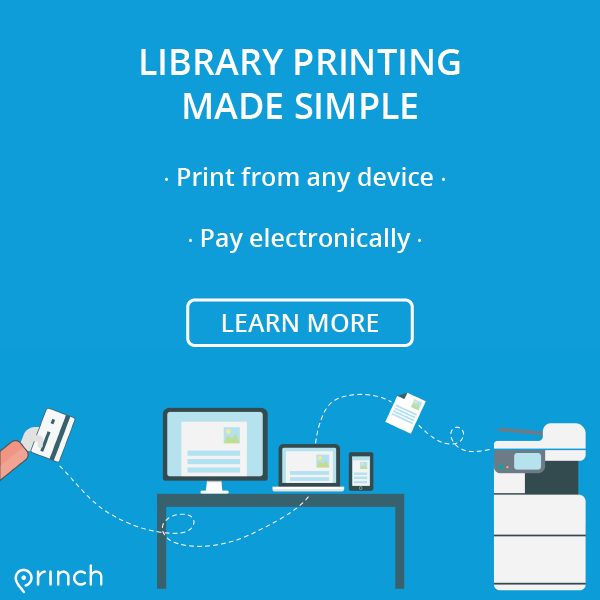To learn more about the ways libraries can utilize emerging technologies, we’ve had a chat with Ida A. Joiner – author, technologist, and librarian with more than 20 years of project management, technology, web, eLearning, consulting, and teaching experience. Read our chat with her below!
1. Can you tell us a bit about yourself and the experience you have with public libraries?
I have been a librarian in public libraries for more than ten years and have had roles in every department including children’s/teens, business reference, technology, job career and education, adult services, and general reference.
I have seen the joy and excitement on the faces of young homeless or impoverished children as they learned how to program robots in robot boot camps and other workshops, and adults flying their first drone inside the public library, and families at “Gadget Day” where they were able to tinker with the latest and greatest new technologies.
Based on all of these experiences and more, I know that public libraries are the great technology equalizer that is bridging the digital economic divide.
I know that public libraries are the great technology equalizer that is bridging the digital economic divide. Click To Tweet2. How are emerging technologies used in libraries nowadays?
The role of public libraries is to give our patrons the tools and resources in order to enable them to live their best lives whether it’s through providing resources on gardening, social services, drones 101 workshops, or even food when they are hungry.
The role of #libraries is to give our patrons the #tools in order to enable them to live their best lives whether it’s through providing resources on gardening, social services, drones 101 workshops, or even food when they are hungry. Click To TweetDrones Introduction
The most common description for a drone is a flying robot. Whether performing military surveillance, protecting elephants and rhinos from poachers in Africa and Asia, delivering medicine in Rwanda, pizzas in New Zealand, taking aerial photographs for popular realtor websites such as Zillow or being circulated at your local public library; drones are one of the hottest and most popular emerging technologies today. This is a technology that will continue to see exponential growth and tremendous opportunities.
There are many innovative uses for drones in agriculture, law enforcement, real estate, film, deliveries, engineering, entertainment, animal protection, and even in schools and libraries.
Drones in Libraries
Public libraries can provide resources on drones at all levels such as providing introduction to drones, where to purchase drones, the cost of drones, the advantages and disadvantages of drones, understanding FAA rules and regulations, how to build drones, how to use 3D printing to print drones, bringing in drone vendors to showcase their products, collaborating with schools to prepare students for careers in STEM and STEAM areas, and collaborating with workforce and other career-related organizations to retrain unemployed and underemployed adults for technical financially lucrative careers with drones.
Learn about drones Sat., June 11 at Mandel Public Library of West Palm Beach https://t.co/SDNlCuYgE3 pic.twitter.com/VGs3jpRsIs
— Palms West Monthly (@PWMonthly) June 7, 2016
Drones in the Mandel Public Library in West Palm Beach Florida
The Mandel Public Library offers several classes and seminars on drones. They partnered with Palm Beach Drones in West Palm Beach Florida to promote robotic education and the safe use of UAS (unmanned aircraft systems). They offered their first class on Drone use and regulations in June 2016. They currently offer Drones 101 where they teach drones enthusiasts about factors that ensure safe, legal, and enjoyable flying.
3D Printing Introduction
3D printing makes it possible to print parts and other items in just hours. 3D printing is going to impact every industry imaginable including automotive, medical, business and industrial equipment, architecture, education, and libraries.
Three-dimensional or 3D printing is one of the most popular emerging technologies that public libraries are utilizing today whether it is for printing jewelry, clothing, chess pieces for the library chess club, smartphone covers, or prosthetic limbs for humans and animals. These are all uses for 3D printing as it is in every facet of our lives. Chris Anderson, the former editor-in-chief of Wired Magazine, states that “3D printing will be bigger than the Web.”
3D Printing in Libraries
3D printers are being used in public libraries everywhere. With 3D printers becoming more affordable, it’s not surprising to find public libraries providing 3D printing stations for their patrons. For free or at a nominal fee, uploaded files can be printed and picked up when ready.
Many public libraries have become the center where people can learn about and use 3D printing. With our zest for knowledge and passion for imparting it to others, librarians have always been on the forefront of technology.
3D Printers @ Chicago Public Library Maker Lab! #3DxLibraries #CPLMakerLab #OSHW #3DThursday #3DPrinting | … pic.twitter.com/5QPhzOoIFL
— NetofEverything 🔁 (@NetOfEverything) July 31, 2014
3D Printing in the Chicago Public Library Harold Washington Library Center
The Chicago Public Library (CPL) Harold Washington Library Center features a Maker Lab. It is the first free and publicly accessible maker space. They offer introductory workshops on their 3D printing technology and an open shop for patrons to work on their own personal projects. The workshops are free and supplies are provided. An example of a workshop that they are currently offering is the “Make a Speaker Amplifier for your Smartphone on the 3D printer.”
Browse here our list of 12 innovative technologies to implement at the library of the future >>
3. What are the main considerations for Implementing Emerging Technology in a Library?
I have included a few tips below if you are considering implementing any of these or other emerging technologies in your public library. These are just a few, there are more available in my upcoming book.
1. Audience Needs Analysis – Who is your audience? What are their needs? Do a needs analysis to determine who they are and what their needs will be.
2. Costs – Determine all your costs including materials, replacement parts, upgrades, training, marketing, staffing. Write grants and partner with other libraries, schools, companies, and other organizations. Find creative ways to find the money to help defray the costs of implementing emerging technology in your library.
Find creative ways to find the #money to help defray the costs of implementing emerging #technology in your #library. Click To Tweet3. Staffing –Who will be the lead “go to” person for emerging technologies in your library? Do you have anyone on staff who can fill this role, or do you need to consider hiring an additional staff member to fill this role?
4. Training – Who will provide your emerging technology training? What type of training will you offer staff? Will you utilize the train the trainer model where the lead “go to” expert in your library will train the rest of the staff? How much will this cost? What can you obtain for free or at a significantly reduced cost?
So much to see & do at our Technology & Digital event. Here until 2.30pm so plenty of time to call in & be amazed! pic.twitter.com/TZfz83pUfZ
— Swindon Libraries (@SwindonLibrary) March 10, 2018
4. Do you have additional comments or advice for libraries wanting to implement emerging technologies?
As technology continues to drive nearly every facet of our lives from drones to 3D printing and to self-driving vehicles, patrons of all ages, races, and income levels are coming to public libraries in record numbers to learn more about these emerging technologies and how they will impact their lives.
As #technology continues to drive nearly every facet of our lives, #patrons of all ages, races, and income levels are coming to #publiclibraries in record numbers to learn more about these #emergingtechnologies and how they will impact… Click To TweetPatrons can come to the public library to learn about drones, drone legislation, and where to purchase them. They can come to use 3D printers to print food, jewelry, clothing, accessories, replacement parts for their vehicles or their Hoover vacuum cleaner that the company no longer manufactures, or prosthetic legs for a family member, friend, or pet.
As emerging technologies continue to grow exponentially, public libraries will continue to be the great technology equalizer where autistic, poor, homeless, or hungry children can come to their local public library and fly a drone, print jewelry on the 3D printer, program a robot, and be given a meal. This child might grow up to be the next Elon Musk, Mark Zuckerberg, Lonnie Johnson, or Katherine Johnson. This is the role of public libraries with librarians leading the charge!
As emerging #technologies continue to grow exponentially, public #libraries will continue to be the great #technology equalizer. This is their role with #librarians leading the charge! Click To TweetDid you enjoy our talk with Ida? Follow us on Twitter and let us know what you enjoyed the most! In case you want to find out more about public libraries technology, you can get in touch with Ana on Twitter here. We will be back next week with another interesting article!
Portions of this article are from the upcoming book, Emerging Library Technologies: It’s Not Just for Geeks, by Ida Arlene Joiner, publishing in June 2018 by Chandos Publishing, an imprint of Elsevier, Inc. All rights reserved.
Recent posts
Library Spaces & Clean Air: The Impact of Printing Choices on Indoor Environment
In this week's Princh Library Blog, guest writer Nina Grant talks about something that's always present, but rarely thought about; air, or [...]
Library Advocacy: How Individuals and Businesses Can Contribute to Library Resources
In this week’s Princh Library Blog post, guest writer Sam L. Bowman explores how both individuals and businesses can practice library advocacy [...]




[…] Public Libraries: The Great Tech Equalizer. Princh Blog. March 2018. […]